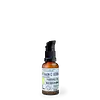What's inside
What's inside
 Key Ingredients
Key Ingredients

 Benefits
Benefits

 Ingredients Side-by-side
Ingredients Side-by-side

Aloe Barbadensis Leaf Extract
EmollientWater
Skin ConditioningPropanediol
SolventGlycerin
HumectantAloe Barbadensis Leaf Water
MaskingAscorbyl Glucoside
AntioxidantSodium PCA
HumectantXanthan Gum
EmulsifyingCucumis Sativus Fruit Water
Skin ConditioningSodium Hyaluronate
HumectantSodium Levulinate
Skin ConditioningMaris Aqua
HumectantPotassium Sorbate
PreservativeLaminaria Digitata Extract
Skin ProtectingPhenoxyethanol
PreservativeCitric Acid
BufferingSodium Benzoate
MaskingChlorella Vulgaris Extract
Skin ConditioningSaccharide Isomerate
HumectantEthylhexylglycerin
Skin ConditioningAloe Barbadensis Leaf Extract, Water, Propanediol, Glycerin, Aloe Barbadensis Leaf Water, Ascorbyl Glucoside, Sodium PCA, Xanthan Gum, Cucumis Sativus Fruit Water, Sodium Hyaluronate, Sodium Levulinate, Maris Aqua, Potassium Sorbate, Laminaria Digitata Extract, Phenoxyethanol, Citric Acid, Sodium Benzoate, Chlorella Vulgaris Extract, Saccharide Isomerate, Ethylhexylglycerin
Water
Skin ConditioningGlycerin
HumectantEthoxydiglycol
HumectantPropanediol
SolventPanax Ginseng Meristem Cell Culture
AntimicrobialSoluble Collagen
HumectantPanthenol
Skin ConditioningSodium PCA
HumectantLecithin
EmollientXanthan Gum
EmulsifyingMalus Domestica Fruit Cell Culture Extract
Skin ConditioningHydrolyzed Elastin
EmollientLippia Citriodora Meristem Cell Culture
Skin ConditioningTetradecyl Aminobutyroylvalylaminobutyric Urea Trifluoroacetate
Skin ConditioningAcetyl Glutamine
Skin ConditioningMagnesium Chloride
Hydrolyzed Hyaluronic Acid
HumectantSodium Hyaluronate
HumectantSh-Oligopeptide-1
Skin ConditioningSh-Oligopeptide-2
Skin ConditioningSh-Polypeptide-1
Skin ConditioningSh-Polypeptide-9
Skin ConditioningSh-Polypeptide-11
Bacillus/Folic Acid Ferment Filtrate Extract
AntioxidantPhenoxyethanol
PreservativeEthylhexylglycerin
Skin ConditioningWater, Glycerin, Ethoxydiglycol, Propanediol, Panax Ginseng Meristem Cell Culture, Soluble Collagen, Panthenol, Sodium PCA, Lecithin, Xanthan Gum, Malus Domestica Fruit Cell Culture Extract, Hydrolyzed Elastin, Lippia Citriodora Meristem Cell Culture, Tetradecyl Aminobutyroylvalylaminobutyric Urea Trifluoroacetate, Acetyl Glutamine, Magnesium Chloride, Hydrolyzed Hyaluronic Acid, Sodium Hyaluronate, Sh-Oligopeptide-1, Sh-Oligopeptide-2, Sh-Polypeptide-1, Sh-Polypeptide-9, Sh-Polypeptide-11, Bacillus/Folic Acid Ferment Filtrate Extract, Phenoxyethanol, Ethylhexylglycerin
Ingredients Explained
These ingredients are found in both products.
Ingredients higher up in an ingredient list are typically present in a larger amount.
Ethylhexylglycerin (we can't pronounce this either) is commonly used as a preservative and skin softener. It is derived from glyceryl.
You might see Ethylhexylglycerin often paired with other preservatives such as phenoxyethanol. Ethylhexylglycerin has been found to increase the effectiveness of these other preservatives.
Glycerin is already naturally found in your skin. It helps moisturize and protect your skin.
A study from 2016 found glycerin to be more effective as a humectant than AHAs and hyaluronic acid.
As a humectant, it helps the skin stay hydrated by pulling moisture to your skin. The low molecular weight of glycerin allows it to pull moisture into the deeper layers of your skin.
Hydrated skin improves your skin barrier; Your skin barrier helps protect against irritants and bacteria.
Glycerin has also been found to have antimicrobial and antiviral properties. Due to these properties, glycerin is often used in wound and burn treatments.
In cosmetics, glycerin is usually derived from plants such as soybean or palm. However, it can also be sourced from animals, such as tallow or animal fat.
This ingredient is organic, colorless, odorless, and non-toxic.
Glycerin is the name for this ingredient in American English. British English uses Glycerol/Glycerine.
Learn more about GlycerinPhenoxyethanol is a preservative that has germicide, antimicrobial, and aromatic properties. Studies show that phenoxyethanol can prevent microbial growth. By itself, it has a scent that is similar to that of a rose.
It's often used in formulations along with Caprylyl Glycol to preserve the shelf life of products.
Propanediol is an all-star ingredient. It softens, hydrates, and smooths the skin.
It’s often used to:
Propanediol is not likely to cause sensitivity and considered safe to use. It is derived from corn or petroleum with a clear color and no scent.
Learn more about PropanediolSodium Hyaluronate is hyaluronic acid's salt form. It is commonly derived from the sodium salt of hyaluronic acid.
Like hyaluronic acid, it is great at holding water and acts as a humectant. This makes it a great skin hydrating ingredient.
Sodium Hyaluronate is naturally occurring in our bodies and is mostly found in eye fluid and joints.
These are some other common types of Hyaluronic Acid:
Learn more about Sodium HyaluronateSodium PCA is the sodium salt of pyroglutamic acid. It is naturally occurring in our skin's natural moisturizing factors where it works to maintain hydration.
The PCA stands for pyrrolidone carboxylic acid, a natural amino acid derivative.
This ingredient has skin conditioning, anti-inflammatory, and humectant properties. Humectants help hydrate your skin by drawing moisture from the air. This helps keep your skin moisturized.
Learn more about Sodium PCAWater. It's the most common cosmetic ingredient of all. You'll usually see it at the top of ingredient lists, meaning that it makes up the largest part of the product.
So why is it so popular? Water most often acts as a solvent - this means that it helps dissolve other ingredients into the formulation.
You'll also recognize water as that liquid we all need to stay alive. If you see this, drink a glass of water. Stay hydrated!
Learn more about WaterXanthan gum is used as a stabilizer and thickener within cosmetic products. It helps give products a sticky, thick feeling - preventing them from being too runny.
On the technical side of things, xanthan gum is a polysaccharide - a combination consisting of multiple sugar molecules bonded together.
Xanthan gum is a pretty common and great ingredient. It is a natural, non-toxic, non-irritating ingredient that is also commonly used in food products.
Learn more about Xanthan Gum